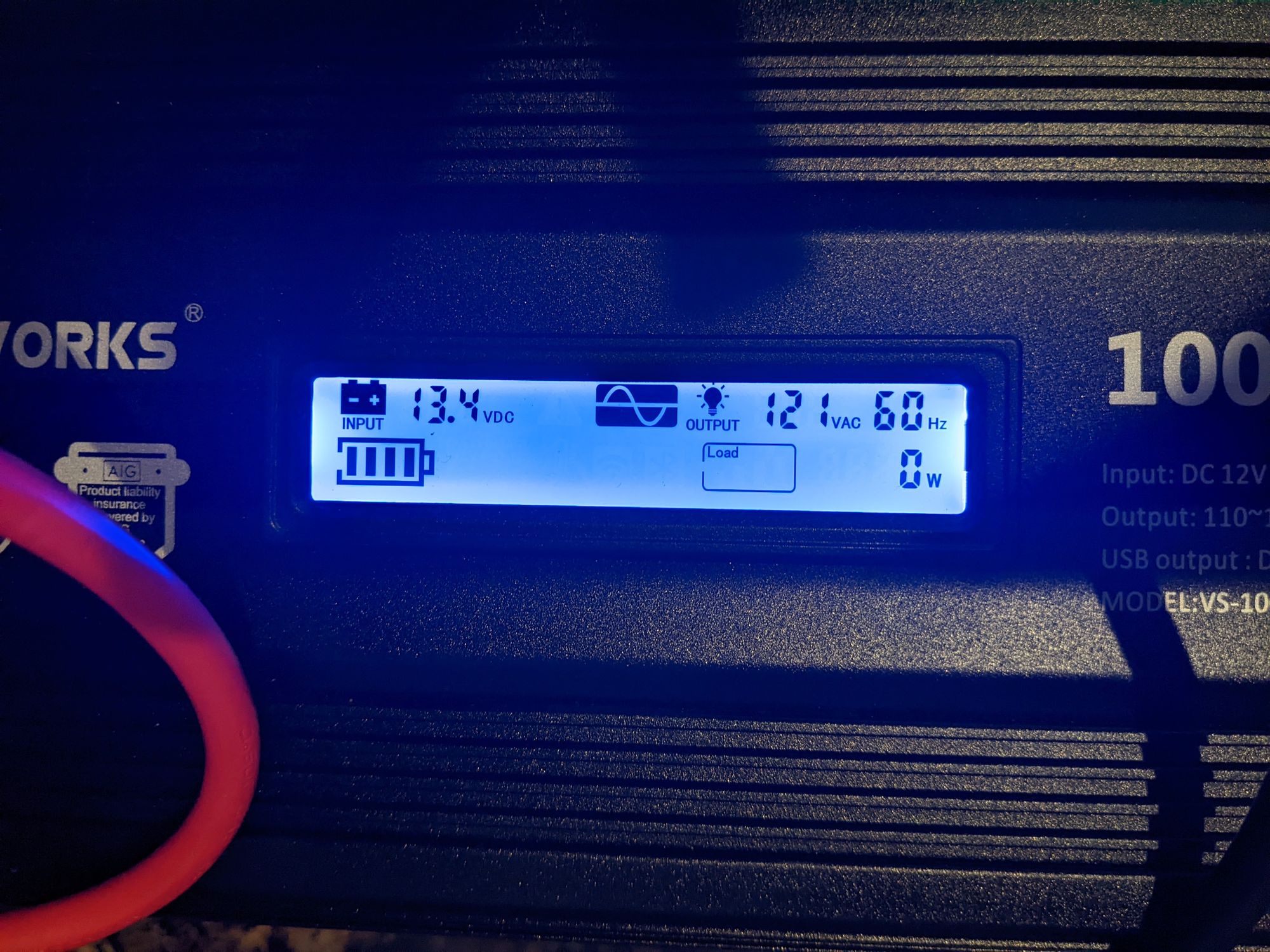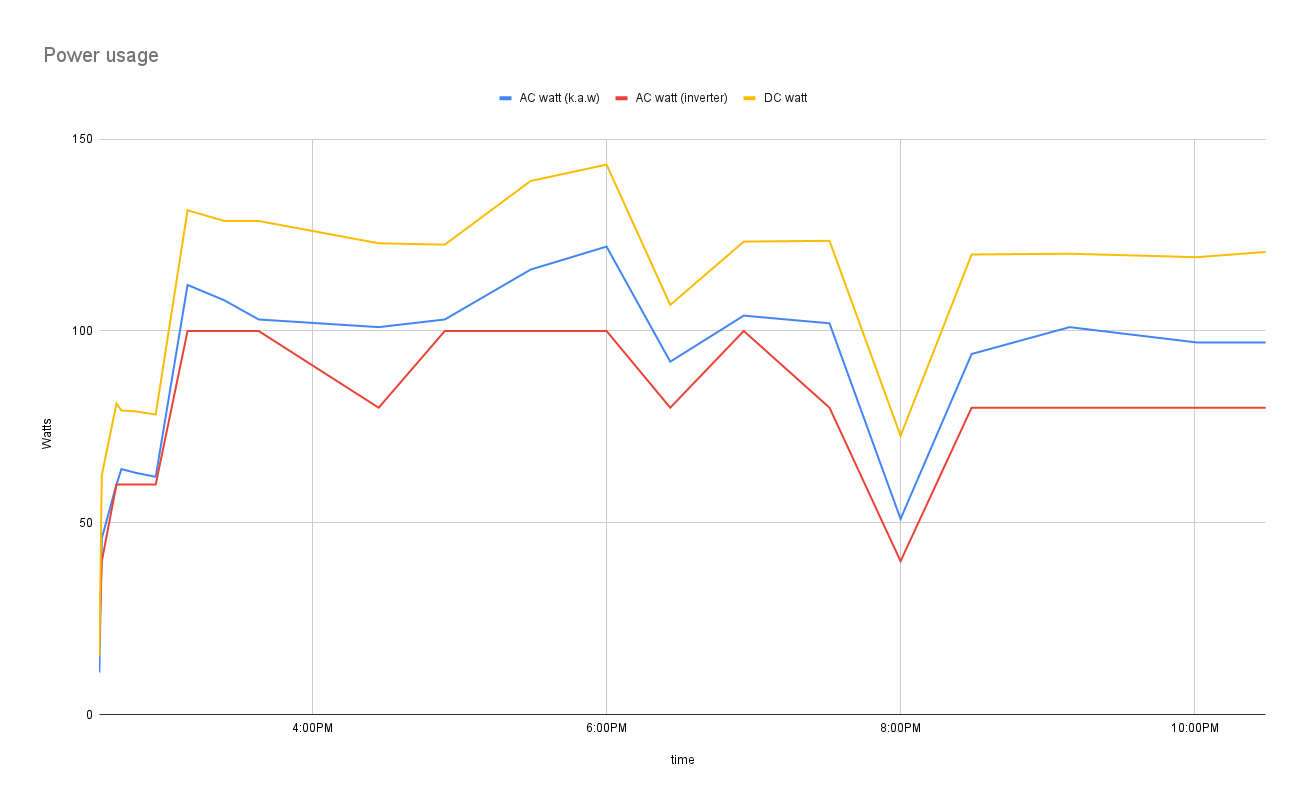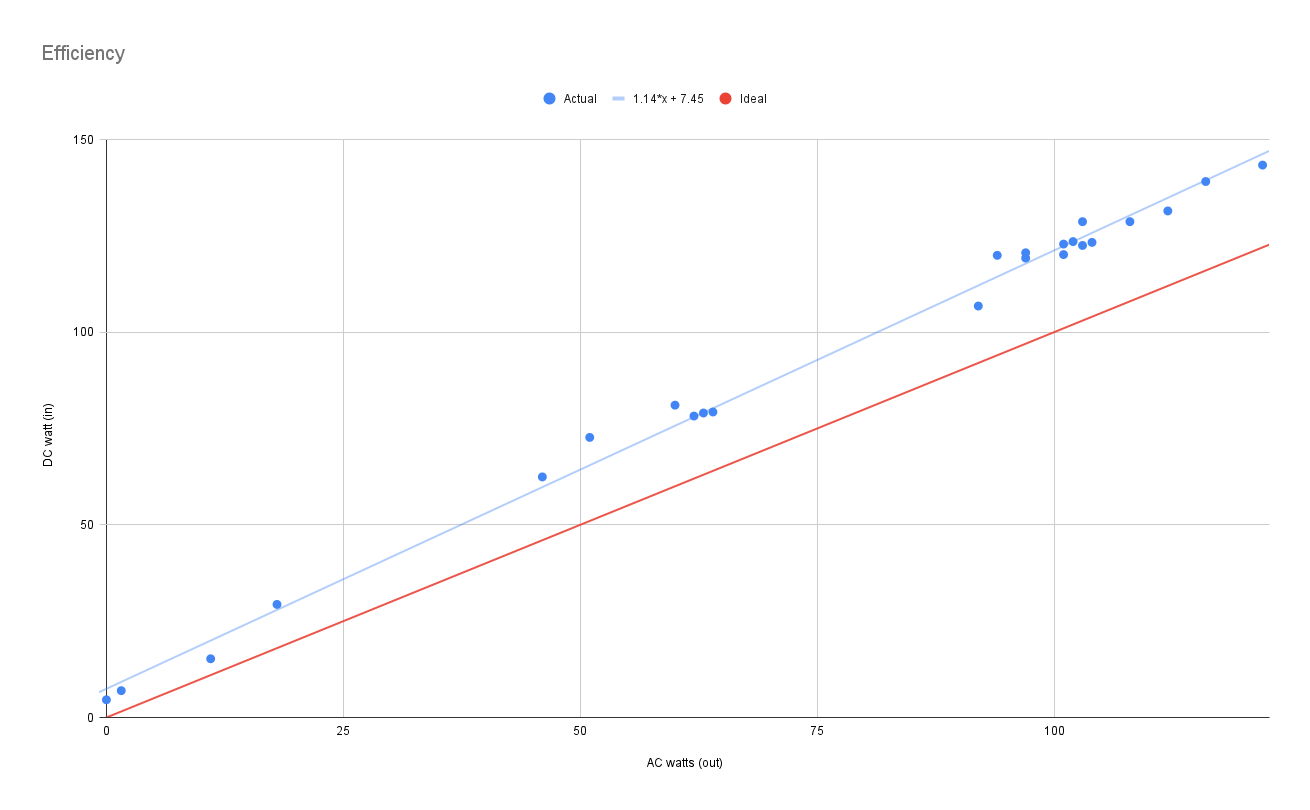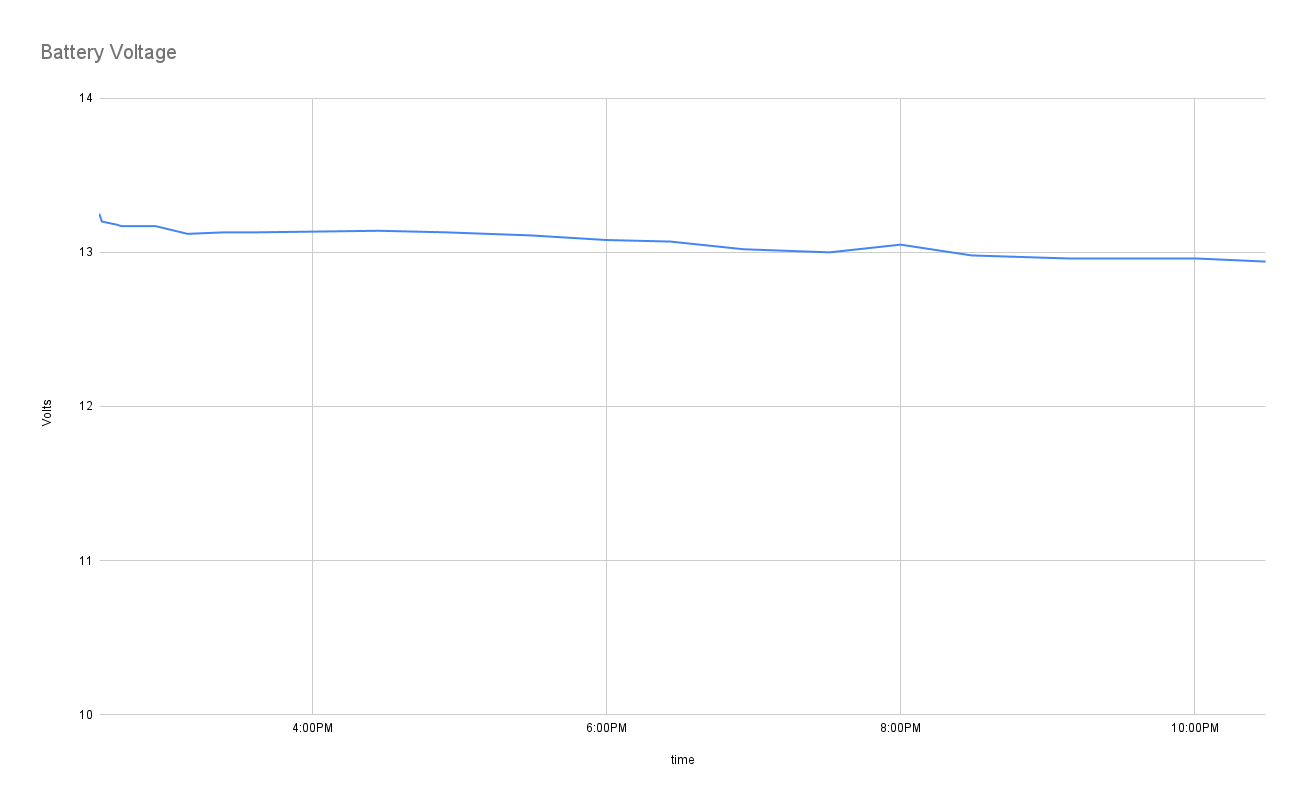Battery backup for fridge, part 2
Continuing from part 1, I run my fridge on battery.
Setup

To start, I connected the inverter to the battery, first using the 1ohm resister to allow the capacitors to pre-charge then connecting it directly. I'm using a Kill-A-Watt to measure the AC power usage, and a DC clamp meter to measure the DC power usage.
The inverter has a useful status screen:

The input battery voltage matches the multimeter reading on the inverter's input posts. The AC wattage display use seems to have a resolution of 20 watts (that is, it rounds to the closest 20W value).
Test
Fridge was connected to the inverter and left to run on battery. We used the fridge as we normally would, opening it, getting ice & water, etc.
Measurements were periodically taken on AC power (watts), total AC power usage (kWh), DC volts, and DC amps. These measurements were used to estimate total DC power usage.
After 7 hours and 56 minutes, the fridge was unplugged from the inverter and plugged back into the wall. Through the test, the fridge was able to run normally and was able to keep its contents cold.
Results
First, the power usage:

On average, there was an extra 20 watts coming from the battery being used by the inverter. This inverter is about 80% efficient at delivering 100 watts. From my understanding, power supplies and inverters are most efficient at closer to their max power. At 2 watts, this inverter is 22% efficient. At 18 watts, it's 61% efficient. Without any load, it still draws 4.5W from the battery.

The total AC power delivered to the fridge was 0.7 kWh. My estimate for total power delivered from the battery to the inverter is 0.92 kWh, so about 76% efficient. This used about 71 amp hours of the 100 amp hour battery, so I estimate the total runtime on one battery would have been just over 11 hours.
The battery was charged back up to full, which used 0.98 kWh. So total efficiency of the whole system (total power out to fridge vs total power in from wall) is around 71%.
Battery voltage was very stable through the entire test, the manufacturer's recommended cutoff voltage is 10.8V. After the test was complete, I let the battery rest for a few hours, and it ended up at 13.13V.

Coming up next
I'm looking at small solar systems, maybe around 400watts. I estimate that size should be able to generate 2.4kWh/day in July, and maybe 1.6kWh/day in January.
